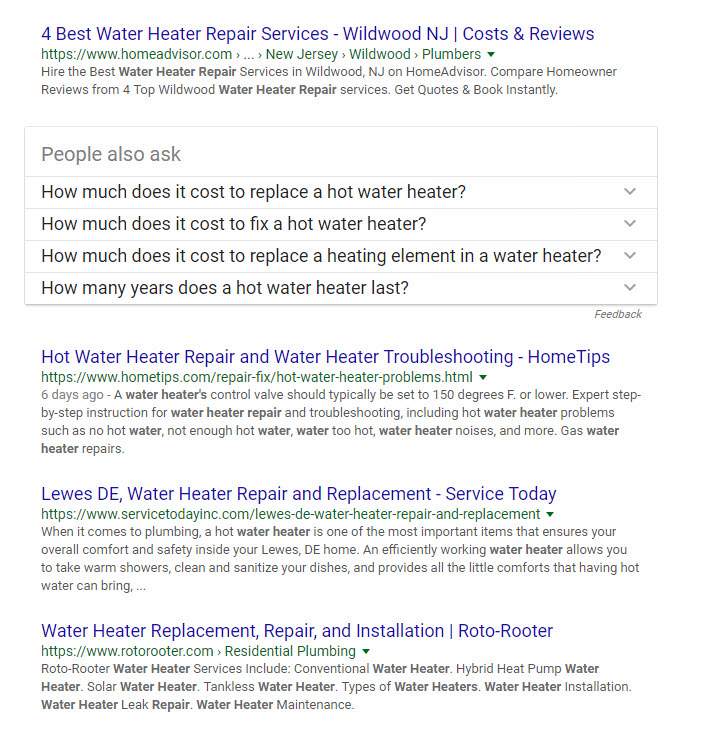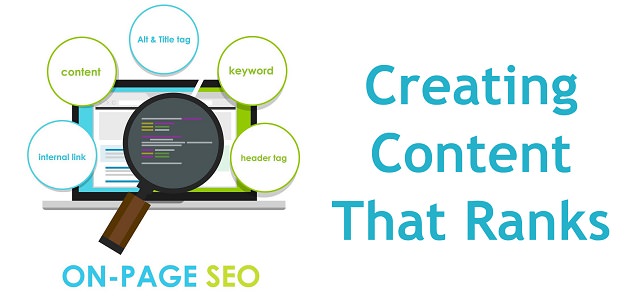OnPage optimization refers to the part of SEO that entails the structural, technical, and content adjustments of a website. The aim is to improve search engine rankings in the long term and to improve search engine rankings by improving content, technology, and structure, thus increasing the perceptibility of a site. Simultaneously, on-page optimization should also maximize the website’s usability.
This type of optimization is also called OnSite optimization and is the complement to OffPage optimization. Together they form the search engine optimization and are essential to the success of a website. OnPage optimization is comprised of various components, which can be broken down into individual aspects.
The goal is to obtain a technically perfect and fast-loading website with the best unique content when it comes to a particular search term or topic. The content should be able to satisfy the search need of the user while structure and performance ensure that search engine crawlers optimally index the content.
Below are some easy ways to optimize your website.
How To Optimize Your Website To Improve Rankings
1. Title and Meta-Descriptions
The title is one of the most striking features that gets seen in the hit lists of Google search users. It is visibly dominant and is highlighted in color and directly linked to a website.
A title is significantly responsible for the clickthrough rate of a search hit, mainly because the more appealing the page title, the more likely the user visits the website!

The title is one of the most important on-page optimization tasks and should be chosen carefully. A title should be short, precise, and meaningful. The searcher must be able to recognize what they will find on a website, and the added value the website promises them. With a well-thought-out title, website owners guarantee that both the searcher and the search engine know what information their website is providing.
Meta-description optimization is a great way to optimize a website. If a person starts an SEO project, the first step is to check the current status. They must perform an on-page analysis before anything else. They should also check whether the meta tags are filled out and optimized according to search engine specifications.
One of the most common mistakes is an incomplete meta-description. The meta tags for keywords can be omitted, but the title tags and the page description should be filled out. The meta description is a short page description of a and is displayed in Google search results. It’s website.
2. Keywords
SEO keywords are one of the most important parts of an on-page SEO checklist. Typing keywords into the search bar is how most people will discover your website. This is why it is important to learn which keywords your target customers are using, then make sure your website incorporates those keywords into the content.
A successful SEO campaign will begin with detailed keyword research to find the best keywords.
One tactic often used by SEOs is to use Google to find related keywords. Webmasters can incorporate topics about these keywords and attract additional visitors.

Not every SEO keyword is relevant. Experienced webmasters will use tools such as Semrush and AhRefs to determine which SEO keywords people used to find their site.
It’s important to distinguish which SEO keywords are relevant to a web project and optimize it as best as you can. Even though there are plenty of things to consider on an on-page SEO checklist, this is one of the most important.
3. Image Optimization

The relevance of image content is increasing. Properly adding and naming images has a positive effect on search traffic and ranking factors.
Image optimization goes far beyond the file name. Understanding how to improve the site’s ranking on Google Image Search will improve its visibility.
The five places to add more information about your image are:
- Image Title: Give a meaningful title to your image. The title should also contain a related keyword in your article.
- Alt-Text: This field is used in computer readers for the sight-impaired. It should describe in words what the picture is about.
- Caption: Help users understand how the image relates to your content.
- Description: A more detailed description about the image.
- Link: Optionally link the image to a website with more information.
Although Google also uses images that have generic names, this is not the rule. When naming imagery, there are a few things to keep in mind to ensure visual content is a viable option when performing an image search.
Adding images to your webpages will keep the readers interested in your content and increase time on site, which is a ranking factor. Humans are very visual creatures, so adding photos to help demonstrate your point more clearly will give your readers a better experience overall.
Be sure to size your images appropriately. Smaller images will reduce the size of your webpage and help it load faster. Since Google prefers short loading times, images should have a web-optimized resolution of 72 dpi.
4. Searcher Intent
Every time someone googles something, they are expressing a desire for information (or searcher intent). The type of information they are looking for may be very different based on the exact query typed into the search engine.
If the query is “water heater repair companies,” then the searcher intent is quite clear. They are looking for a company that can come fix a water heater. If the query is “how to fix a broken water heater,” the intent is also obvious, and the results would be a series of videos or informational articles.
However, if someone typed in “water heater repair” it isn’t quite as clear. In this case, Google cannot easier identify the search intent. The person may be looking for how-to information, a service repair company, or how much does it cost to repair a water heater.
When Google isn’t sure what the user is looking for, they may show a variety of results. They also give a few related questions in an attempt to narrow down the searcher intent. Here are a few of the search results Google returned for “water heater repair.” As you can see, several different types of results are displayed.

Search engine algorithms are continually getting smarter because they try to find out the actual intention behind a search query. What types of search intentions exist, and why is it important to consider them in keyword research and search engine optimization of a website?
If you want to rank for a specific keyword, the webpage should be highly relevant to that keyword and satisfy the users intent for that keyword. When crafting articles around keywords, the writer needs to place themselves in the searcher’s mind & try to answer any questions they might have.
A lot of research goes into the question of user intent. The quality of displayed search results is the criterion of whether the users are satisfied with the service of a search engine or not. After all, if users suddenly realize that another search engine is delivering better results, they will start using it.
5. Local On-Page SEO Factors
Local search engine optimization is interesting for both local businesses/entrepreneurs and directories such as Yelp, Angie’s List, and Home Advisor.
Locally based companies can be things like doctors, lawyers, restaurants, or local shops. Local search queries not only include a local reference but usually, also have a monthly search volume in the two- to three-digit range.
Most of the local search queries are also made by mobile devices. So the load time as well as the mobile orientation of the web page, are important factors when it comes to local search queries.
Why Should On-page Be the Foundation of a Ranking Strategy?
On-page optimization is about all the actions that affect a website. On-page content optimization regards the content, technical, and structural aspects of a site. Less than 2% of users search on the second page of search results. SEO optimization should, therefore, be a high priority.

